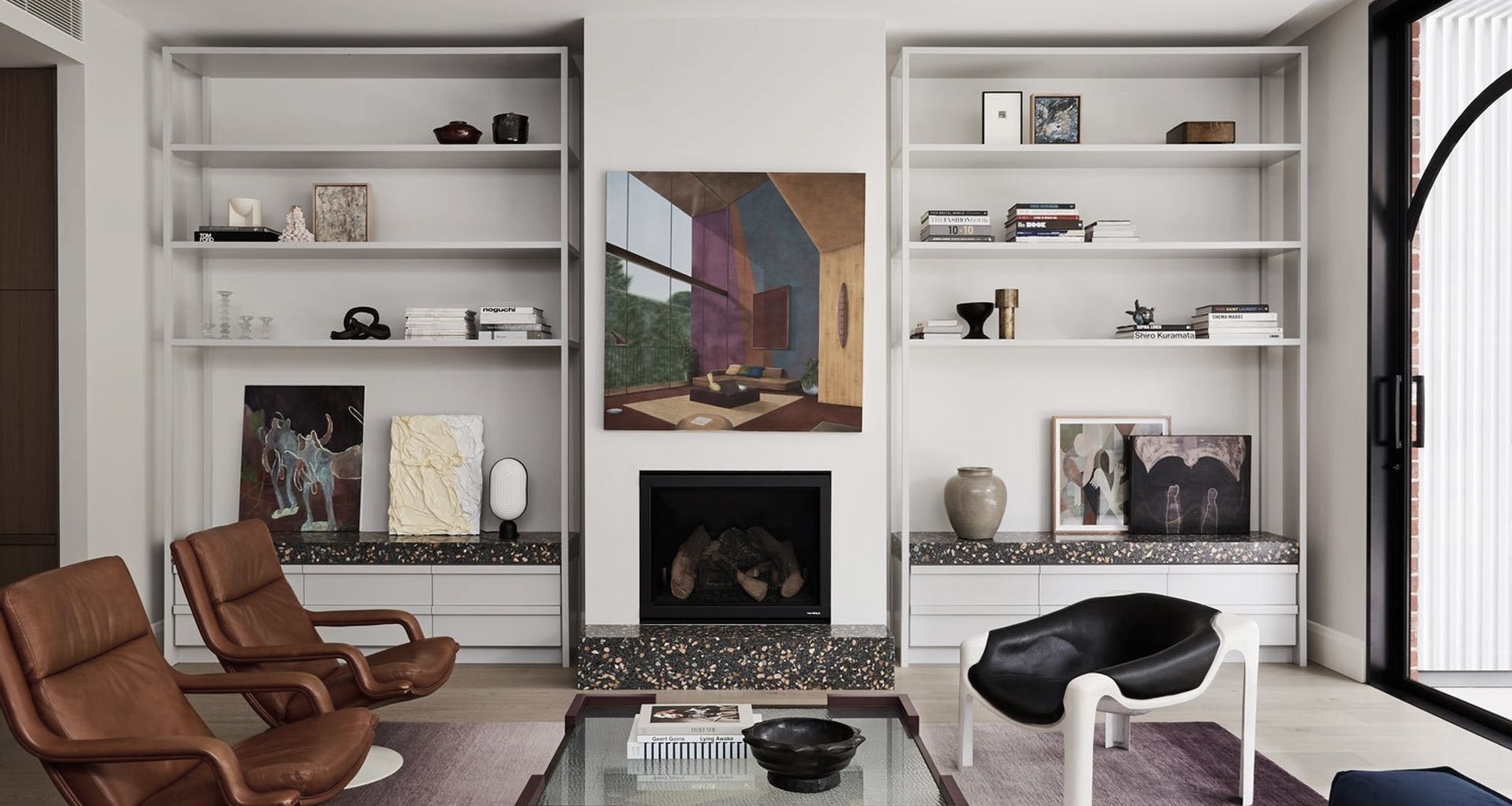How to use wall art to make a small space appear larger
Written by
22 November 2022
•
4 min read

In our increasingly urbanised built environment, space is a rare and covetable commodity. However, even a shoebox studio apartment can be made to feel larger through thoughtful planning, with good interior designers typically combining spatial planning with aesthetic considerations to create a space that is both enjoyable and practical to live in. Art is an essential part of life itself; bringing it into your home not only adds visual appeal but helps the space truly feel like yours.
No space is too small for a little art, with strategically selected and placed art aiding in making your home feel larger. Here’s how to select and style wall art to showcase your personality and enhance your space.
Read more: A harmonious marriage between ancient Indigenous techniques and contemporary style
Choose colour wisely
When it comes to wall art colour schemes for small rooms, it’s best to look at the current colour palette of your room. While as a general rule, lighter shades and cooler tones (think seafoam blues, lilac and pale grey), it’s important for the colour palette of your wall art to be cohesive with the aesthetic of the rest of your space. Select complementary colours and avoid too many clashing patterns, as this can overwhelm a small space. If you have patterned wallpaper, it might be best to opt for a minimalist-style sculpture rather than wall art.
Read more: Furniture as art: a synergy of function & aesthetics in every piece
Rethink the way you display your art
Wall art needn’t always be hung on the wall. To create the illusion of higher ceilings, consider drawing inspiration from Parisian apartment decorating and resting your art on the floor, using the wall to prop it up. While the artwork-on-floor approach isn’t for everyone, it’s a fresh, unfussy way to arrange art, making it well-suited to decorating relaxed coastal homes or lending a funky touch to otherwise opulent interiors. In Layer Cake by Arent&Pyke, intricate heritage mouldings are offset by an oversized painting resting on the floor, adding a louche tone to an otherwise traditional space.
Embrace the salon hang
Also known as a ‘gallery wall’, the salon hang refers to a method of hanging wall art in which a crowd of complementary and contrasting paintings are hung together, either in a grid or a more eclectic arrangement. It serves as an ideal way to showcase several pieces of art in multiple sizes and styles, working to maximise wall space and allowing the wall to function as a single vast work of art.
Don’t be afraid to supersize your art
A small space needn’t equate to small art. In fact, grouping together several small pieces of art can often serve to make a small space feel crowded and cluttered. Large-scale wall art functions as a focal point, either on its own or as a base for smaller accent pieces to branch out from.
Strategic framing
If you’re opting for frames over gallery wrap, ensure you select them wisely. Homes with bohemian, eclectic, or traditional interiors can benefit from the use of ornately carved wooden or gilded gold frames. Meanwhile, rectilinear frames with clean lines work well in modern homes. Avoid selecting a frame colour that provides a stark contrast to your walls – such as a black frame on white walls – as this can ‘cut off’ the image and make the space feel smaller. Instead, select tones that are cohesive with your existing colour palette.
Think upwards
Hanging your art vertically creates the illusion of space. A vertical gallery wall makes ceilings look higher, while hanging a print or original piece above a door, shelving unit or simply higher on the wall adds depth to your space and makes it feel more expansive.
Consider having a bespoke mural painted
Found an artist you really love? Commissioning a mural in your home is the ultimate form of commitment; both to your house and to the artist who painted it. Large-scale murals with paintings of landscapes, flora and fauna, or funky geometric patterns not only change the ambience of a room, but aid in making a small space appear larger than life. If you're not quite ready for a mural wall, try wallpapering a feature wall – oversized botanical prints always work well.
Ready to start your art collection? View a wide range of wall art on ArchiPro.
Words by Tanisha Angel








